It’s a brisk, blustery morning when I set out to explore the abandoned treasures of Boddin Point.
The spur of rock juts out into the North Sea and boasts some fascinating features, all of which are being threatened by coastal erosion.
There’s the crumbling remains of three huge 18th Century lime kilns, a ruined bothy and salmon fishing station, an old harbour – and, further along the coast, a curious clifftop cemetery with a “stinky stone”.
It’s a short stroll down to the coast from the tiny hamlet of Boddin, where there’s limited parking on the verge leading down to the point, or a bigger layby a few hundred yards back up the road.
I gaze in awe as waves crash ominously on the jagged rocks below, before checking out the remains of the old slipway and harbour and the rotting husks of wooden fishing boats piled up on the shore.
Looking closely, I can pick out the name ‘Sandra’ on the bow of one boat.
The lime kilns on the promontory are certainly an imposing sight, although having been abandoned in 1831, parts of the structures are disintegrating.
Dangerous structure – do not enter!
So it’s no surprise to find a signpost warning would-be explorers of the hazards of entering.
And of course, while I’d encourage readers to take this safety message seriously, I’m on a mission…
I’m hit by a wall of wind as I strike out across the blasted heath, climb up the grassy slopes of the main kiln, and peer down a perilously deep shaft.
There’s a gaping hole at the apex and it’s a long way to fall. I crouch low to the ground, fearing I’ll tumble into the abyss, before carefully retreating back down.
Inside the kiln, the views through the main archway – across the golden sands of Lunan Bay to the ruins of 12th Century Red Castle – are breathtaking.
Kilns were built by the laird
The kilns at Boddin were built during the 1700s by the laird Robert Scott of Dunninald.
There was a huge market for lime back then, with farmers using it to improve soil – and at one point Boddin was the largest limeworks in Scotland.
Scott realised that by enclosing his fields, spreading them with lime and cultivating them intensively, he could greatly increase the yield of his crops.
In April 1697 the Earl of Southesk granted him the right to extract the lime, which was, conveniently, right on his doorstep.
Scott began quarrying the limestone immediately, and shipped in coal from Fife to fuel his limeworks.
Although Scott died before the scheme reached its full potential, his brother Patrick Scott and sons took over.
Initially, a small harbour was built at Boddin, and in April 1783, Archibald Scott, the third generation of the family, applied for government aid to build a new pier to handle larger ships.
Abandoned in the 1830s
After a century and a half, the limestone at Boddin was depleted. The quarry was abandoned in the 1830s, although it’s possible the kilns may have continued to burn limestone shipped in from elsewhere.
By the start of the Victorian era, the kilns had fallen out of use and since then, the North Sea has continued to encroached on Boddin Point, leaving the future of the limekilns in doubt.
The sea has already undercut the site and the kilns are beginning to collapse – so visit soon, before this rugged coastal gem vanishes.
Salmon fishing station
Once I’ve finished my somewhat precarious noseying around, I head along the coast to an abandoned 19th Century salmon fishing station.
There’s a whitewashed bothy here, in seemingly decent nick, and a row of ruined terraced houses.
This cluster of dilapidated buildings is worthy of exploration – many of the original features, such as fireplaces and wooden lintels, can still be seen.
There’s also an old icehouse with a “fishhouse” building on top of it.
There would’ve no doubt be a busy, bustling community here back in the day, but it’s been long forgotten.
Elephant Rock
Leaving the fishing station, I climb a cliff path which passes impressive Elephant Rock, a coastal arch of volcanic rock nestled in a secluded bay that resembles an elephant’s head and trunk.
A little further along the muddy track is a tiny clifftop graveyard – Dunninald Cemetery.
Once the site of St Skae chapel, which dated back to the 12th Century, today the little-known and very overgrown cemetery houses around a dozen graves and a couple of mausoleums.
Mysterious grave
The most intriguing headstone, teetering right on the cliff edge, boasts the grave of a man who apparently died 19 years before he was born!
Beneath the declaration, “In Memory of George James Ramsay”, the inscription on the sea-facing stone reads: “Born November 24, 1859. Died December 17, 1840”.
There are loads of theories about how this came to be. Did someone make a glaring error mistake while engraving the headstone?
And if so, did the grieving family not notice? Or perhaps they did notice but couldn’t afford to have the inscription changed?
It’s unlikely we’ll ever know, but George Ramsay, whoever he was, will never be forgotten.
Beware the stinky stone!
According to local legend, there’s another bizarre grave here nicknamed the “stinky stone”. It’s said that if you jump on it, a nasty odour will emit. I’m not sure which stone this is but I’m sure to avoid jumping on any of them…
You can carry on past the cemetery if you fancy a circular walk of just over seven miles, which takes you along to Ferryden, past the lighthouse at Scurdie Ness.
I’m feeling pretty tired – and the weather is not my friend – so I leave that adventure for another day.

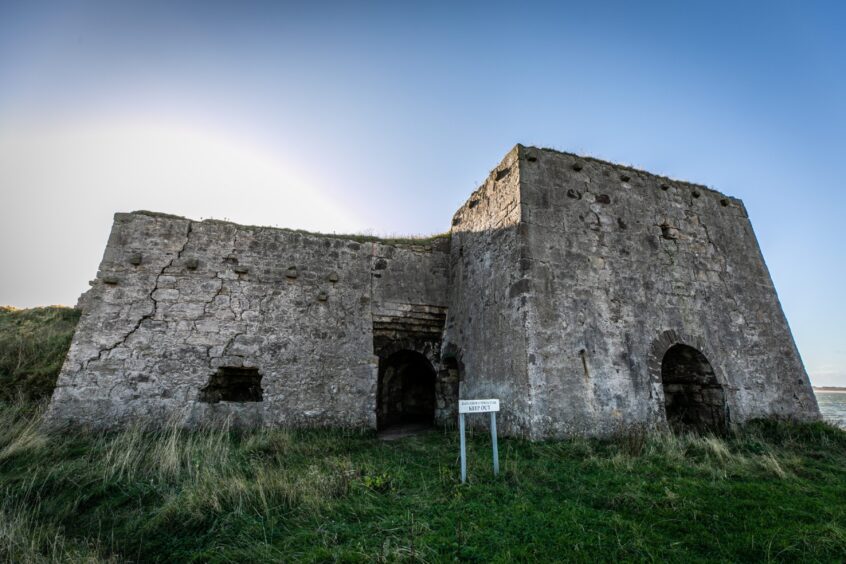
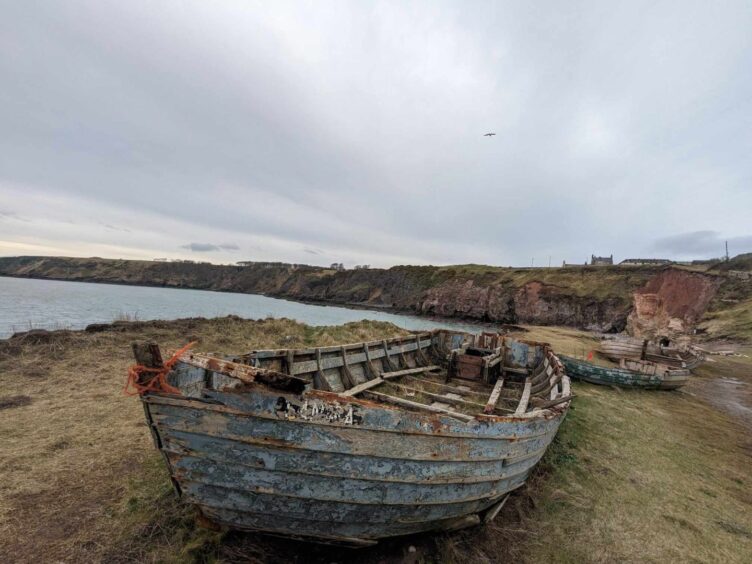
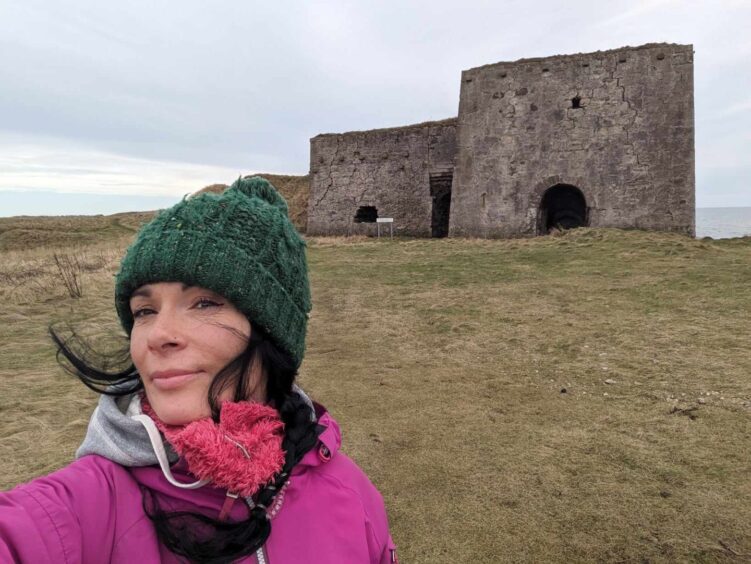



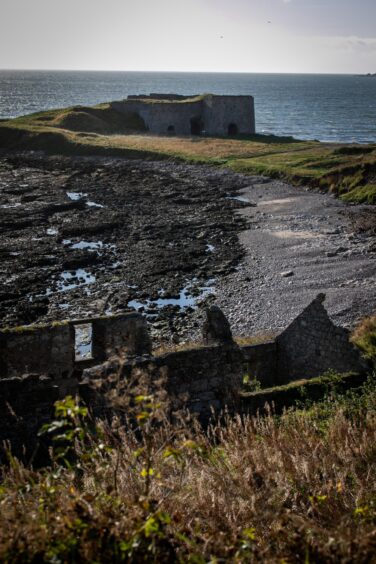
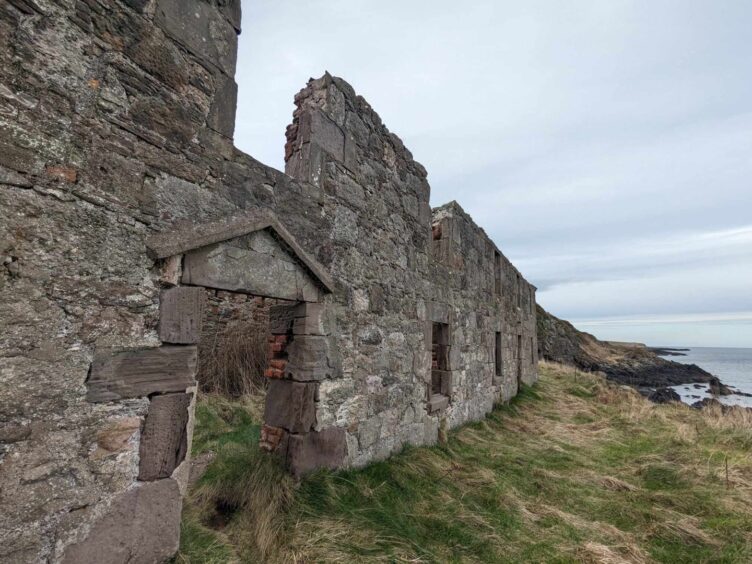
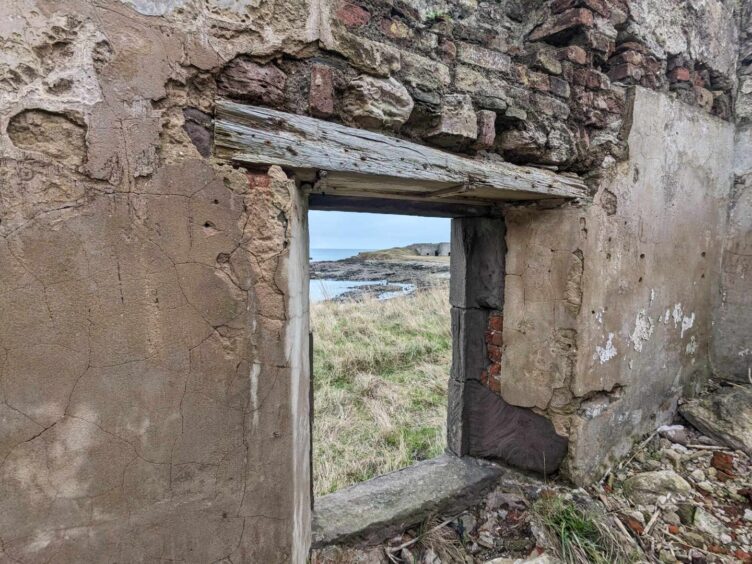
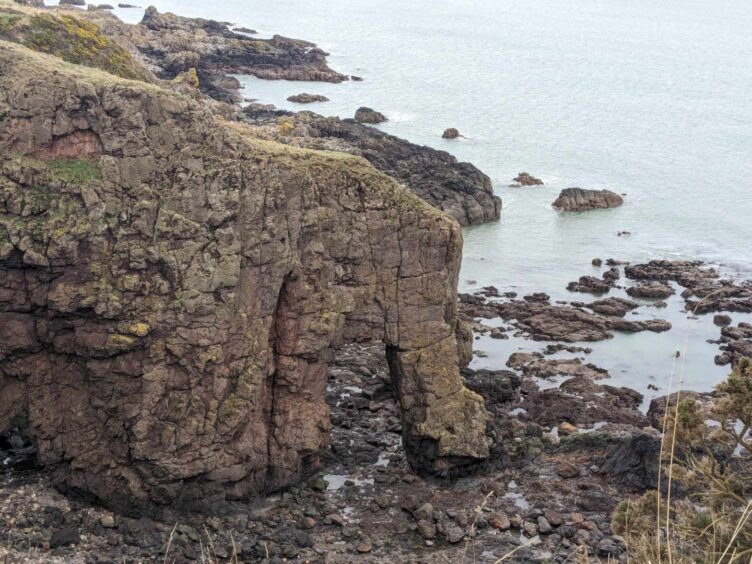
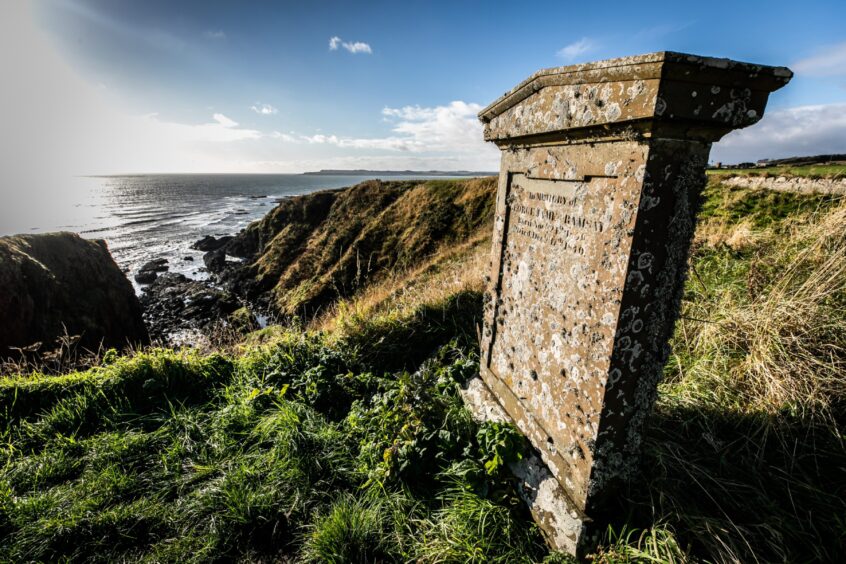












Conversation